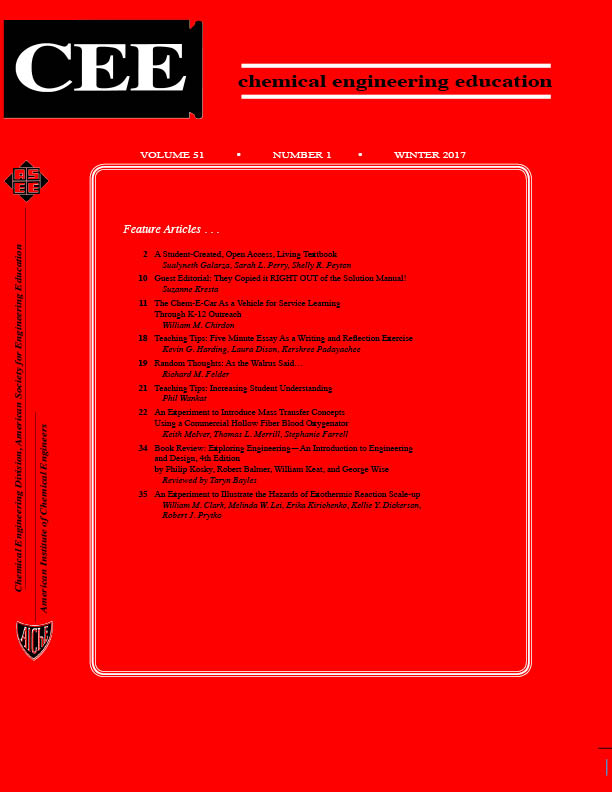An Experiment to Illustrate the Hazards of Exothermic Reaction Scale-Up
Abstract
Exothermic reactions can present safety hazards and there is a recognized need for reaction safety education at the undergraduate level. We present an experiment that illustrates the pitfall of direct scale-up of an exothermic reaction that can lead to thermal runaway. The iodide-catalyzed hydrogen peroxide decomposition reaction yields dramatically different results when conducted in different sized round-bottom flasks in an ice bath. By combining 1 volume of 30% H2O2 with ½ volume of 0.1M KI solution, the temperature response of the mixture can be followed using different sized reactors being cooled in an ice bath. With similar stirring rates, initial temperatures, and reactant concentrations, the heat removal via an ice bath is sufficient to control the reaction in half-filled flasks less than or equal to 500 ml. Scaling up to 1000 ml results in thermal runaway. Calculations are shown to predict the observed behavior, but direct observation through a laboratory experiment is recommended to ensure that students appreciate the hazards of scaling up exothermic reactions.


